While it might not be the most obvious thing to see in Ljubljana, a visit to the Jože Plečnik House is an enlightening experience. Jože Plečnik was a visionary architect and city planner who transformed the once-small city of Ljubljana in Slovenia’s capital. To get a proper idea of his oeuvre and vision, Plečnik’s influence in the city is compared to Gaudi’s in Barcelona. Therefore, visiting the house where he worked and lived for decades feels like a fascinating journey into the mind of the person who envisioned an entire city.
Jože Plečnik was born in 1872, and his architectural vision marked three cities: Vienna, Prague, and his hometown, Ljubljana. After working in Vienna for several years, he returned to Ljubljana in 1921. The Plečnik House, which is today transformed into a museum, served as his house from the day of his return until his death in 1957. Although the initial plan was to live with his siblings, this never really happened. Soon, Plečnik started to transform the building into a place where he could live and work without distractions.
In the following lines, I will share my impressions from my visit to the Jože Plečnik House in Ljubljana. One thing that I should note beforehand, though, is that guided tours take place every full hour. Much of the information provided in the article was shared by a fantastic tour guide, and her knowledge gave me a whole new perspective. If you purchase a Ljubljana Card, you are entitled to visit the museum for free and join the tour. I highly recommend it to people with a genuine interest in architecture.
So, let’s begin with what you can see in the Jože Plečnik House.
*Some links are affiliate links. It means that if you buy something, I might earn a small commission at no additional cost to you.
Introduction to Jože Plečnik’s work

We need to dive into the era’s historical context to gain a deeper understanding of Jože Plečnik’s work and influence. Significant events took place during the period Plečnik conceived the vision of Slovenia’s capital. The collapse of the Austro-Hungarian Empire was one, and equally notable was the rise of the Vienna Secession architectural style, which was closely related to Art Nouveau (read more in my Riga Art Nouveau guide). Moreover, since Jože Plečnik returned to Ljubljana in 1921, it means that he conceived the city plan between the two World Wars.
A student of the famous architect Otto Wagner, Plečnik brought fresh ideas to Ljubljana. His human-centered urban planning mainly consisted of a dialogue between the old city and the rise of contemporary society. There’s an open dialectic between public spaces -like parks, bridges, and squares- and pre-existing landmarks. Moreover, his love for nature added a layer of green spaces to his vision -and this love is also omnipresent in his house.
To sum up, Jože Plečnik used two main axes in his planning: land and water. The land comprises public spaces like the French Revolution Square, the city’s bridges, and the so-called Green Promenade. On the other hand, the water axis to the embankments of Ljubljanica River and the way that life unfolds around it.
The Jože Plečnik House in Ljubljana, Slovenia
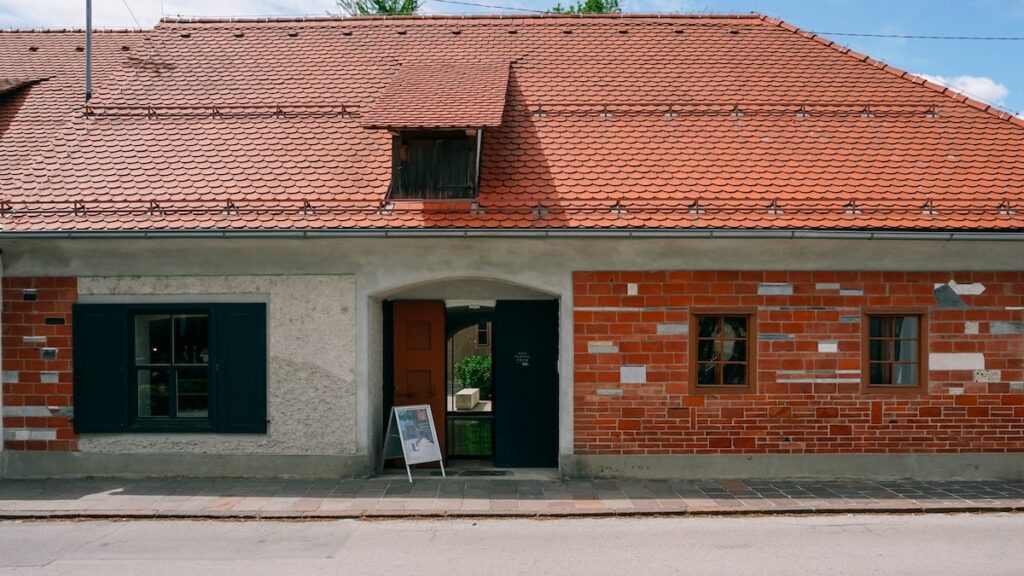
Although Plečnik marked the city with the iconic Triple Bridge, the Main Market, and other notable landmarks, his house is the best example of his vision. Plečnik applied to this house in the Trnovo district his concept of “architecturae perennis,” which stands for eternal architecture. His admiration for classical models, his love for green spaces, and his will for privacy are everywhere in the building.
Although you can wander on your own around some of the house’s rooms, it’s only through a guided tour that you can access the entire building.
The house
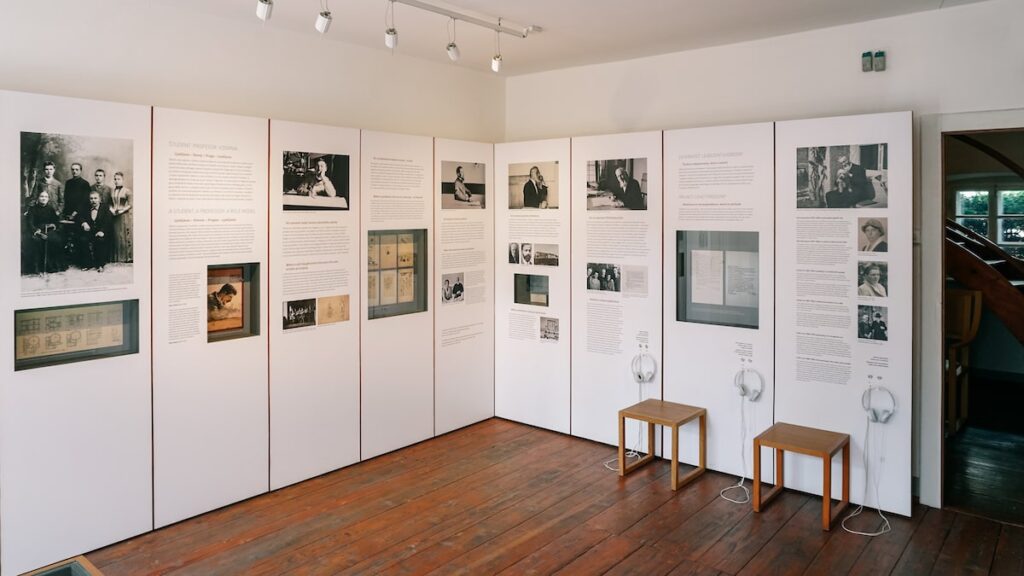
As you can see from the image, this is a humble building on a quiet street. A hundred years ago, when Plečnik bought the house, it was even more peaceful, and this felt like a blessing. Jože Plečnik was a loner and appreciated his peace of mind. He used to work a lot, and apart from occasional visits, he preferred to spend his time working. This part of the Jože Plečnik house also hosts an exhibition about his life and work. It’s open to the public, and you can see it on your own.
Although his life motto was “A tower, a mule, me and a garden,” his only companion was his dog. However, the humble building soon got a tower.
The Tower
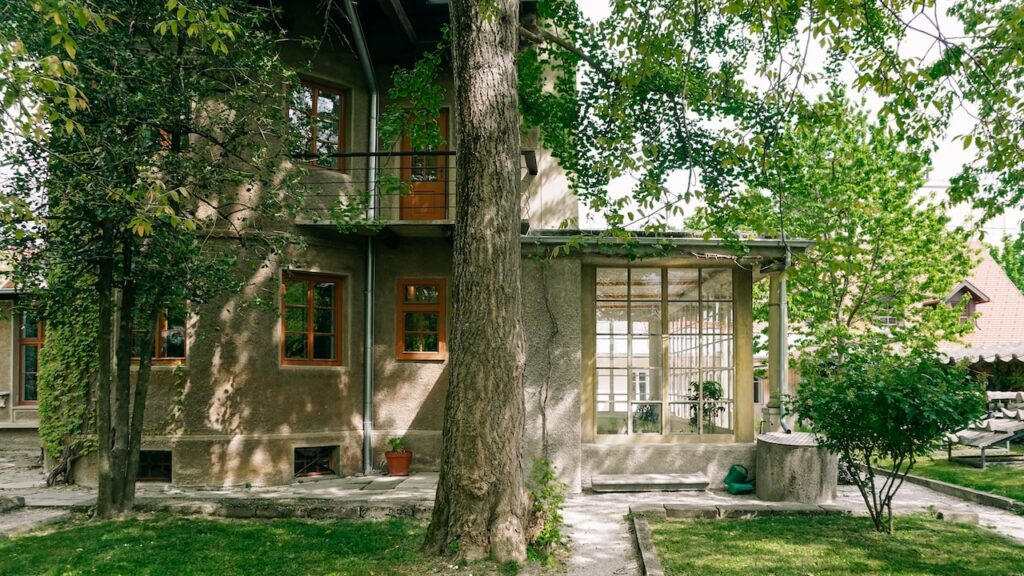
Walking all the way to the back, you will see a small tower. This cylindrical building has two floors and there you can see the architect’s study and room. However, you shouldn’t expect anything huge: it’s a modest building compatible with the architect’s mindset.
The garden

Open green space is the cornerstone of his vision of future cities and his well-being. Joze Plecnik couldn’t imagine life without a garden, and soon, he materialized one. By acquiring nearby properties, he created a vast green space where he could wander and get inspired. In the garden’s premises, you can also see a beehive.
Despite being a loner, Plečnik didn’t want to fence the garden. On the contrary, he left it open so other people could walk around. Today, the museum has respected this concept, and you can see people from neighboring houses taking a stroll.
The tower’s patio
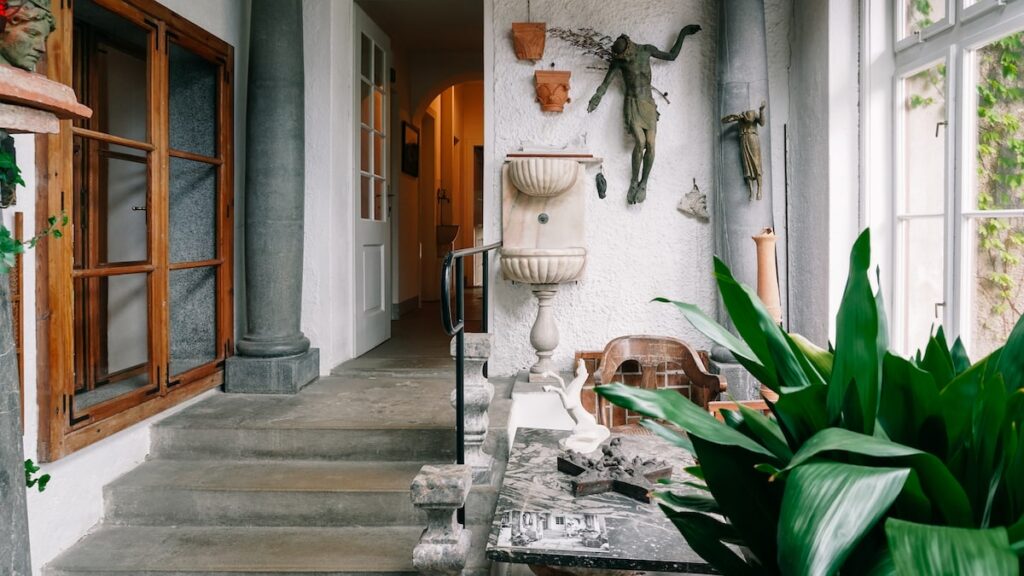
Jože Plečnik was a very private person. He once rejected the option of getting married with a witty remark: “I’m married to my architecture.” The tower’s interior proves his words. You can visit the tower only on the guided tour offered by the museum, so don’t miss the opportunity.
When entering the tower, you’ll come across the patio. This is the coldest room in the building, and there’s a reason for that. The majority of visitors (from clients to people he knew) wouldn’t see any other room. Plecnik wanted these visits to be short and non-distracting. Apart from the flowers, you can also see an uncomfortable seating area. The architect didn’t want to waste time from work, and to make the whole experience less pleasant, he had left a part of the ceiling uncovered. This way, the patio would be exposed to the elements, making it clear that people wouldn’t stay that long.
The kitchen

The kitchen at the Jože Plečnik House is a plain room. The architect would go there every morning to drink his coffee -he actually loved coffee. However, he didn’t want to lose time at all. For this reason, he created a chair, and one of its arms served as a table. He had his notes and sketches there so he could start working straight after waking up.
Here is the chair:

Yes, it’s not very comfortable. Plecnik didn’t want it comfortable because he feared it would make him lazy or even fall asleep. Therefore, he made it as uncomfortable as possible to avoid distraction.
The bedroom
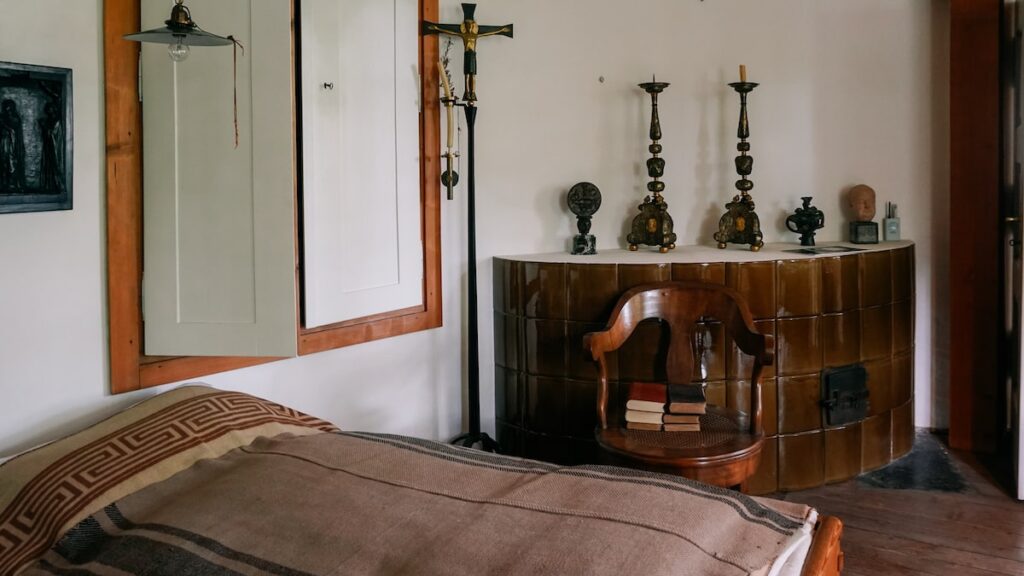
Jože Plečnik wasn’t a big fan of sleep either. As you can easily imagine, he considered it lost time and a distraction from work. Despite being tall, he constructed a relatively short bed for his size. Moreover, he made sure to make it pretty tight and uncomfortable as well.
He didn’t permit himself laziness, so he wanted to ensure that he’d get straight out of bed after waking up. Then, it was time for his coffee.
Jože Plečnik’s study room
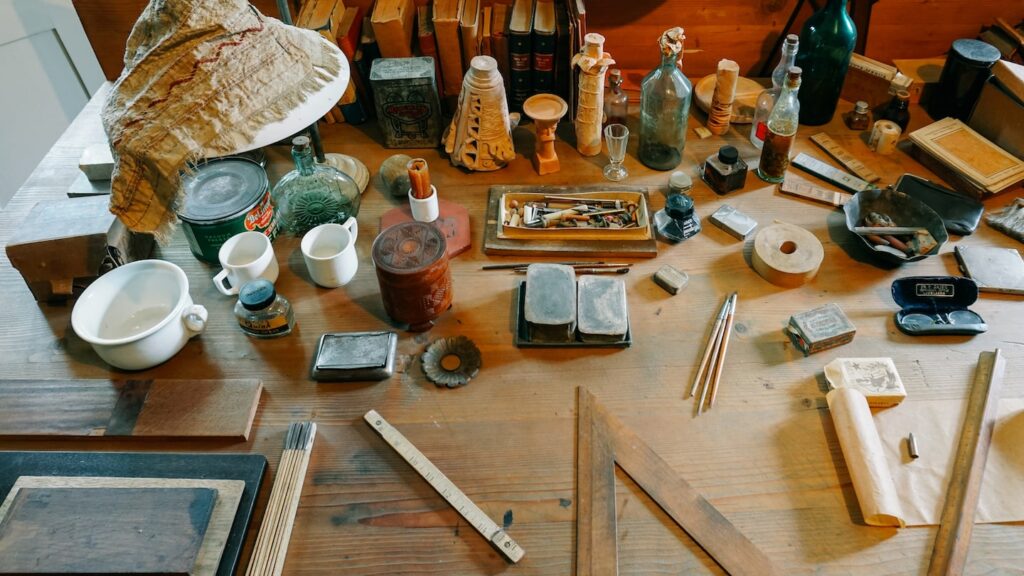
The architect’s study is a spacious room on the tower’s second floor. From there, he had direct views of the garden and the nearby church. You can still see a big table with lots of his working tools. Pencils, rulers, glasses, cigarettes—everything that carried Plečnik through the working day is still there.
And as you can see, he didn’t throw anything away:

The architect’s study is one of the most impressive rooms in the complex. And if I might say, it’s probably the only room where he allowed himself some level of comfort. Which, of course, makes absolute sense.
The winter garden

The Viennese concept of the Wintergarten (or winter garden) consists of a room with vertical windows offering the feeling of a protected garden. Jože Plečnik adored nature and wanted to be in close contact with it daily. He attached a stunning yet simple winter garden on the tower’s ground floor where he could enjoy life and work.
I found the entrance fascinating: despite being tall, the architect constructed it as a narrow passage resembling a church’s entrance. This way, he had always to “bow to nature” before entering the winter garden. Here’s how it looks:

One final detail that mattered a lot to him was the floor. It’s not made of a single material and, therefore, it doesn’t have a single style. Jože Plečnik had a thing for sustainability long before it was a concept. He didn’t throw anything away, and that’s how he made the winter garden’s floor: by adding leftovers from various materials.
Practical information for your visit to the Jože Plečnik House

In this section, you can find quick information about the Joze Plecnik House in Ljubljana. I highly recommend visiting it during your trip to Slovenia’s capital because it will show you how the city transformed into a capital.
The location
The Jože Plečnik House in Lujbljana is at 6, Karunova ulica 4. You can see the museum’s location on Google Maps here.
Opening hours
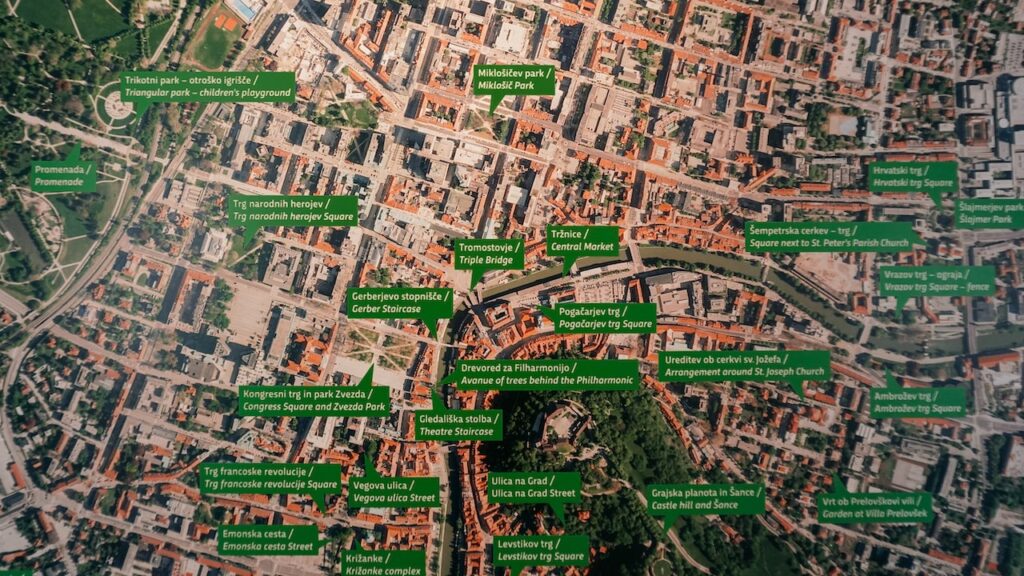
The so-called Plečnikova hiša (yes, that’s Plecnik House in Slovenian) is open from Tuesday to Sunday between 10 am and 6 pm. The museum remains closed on Mondays.
Jože Plečnik House Tickets
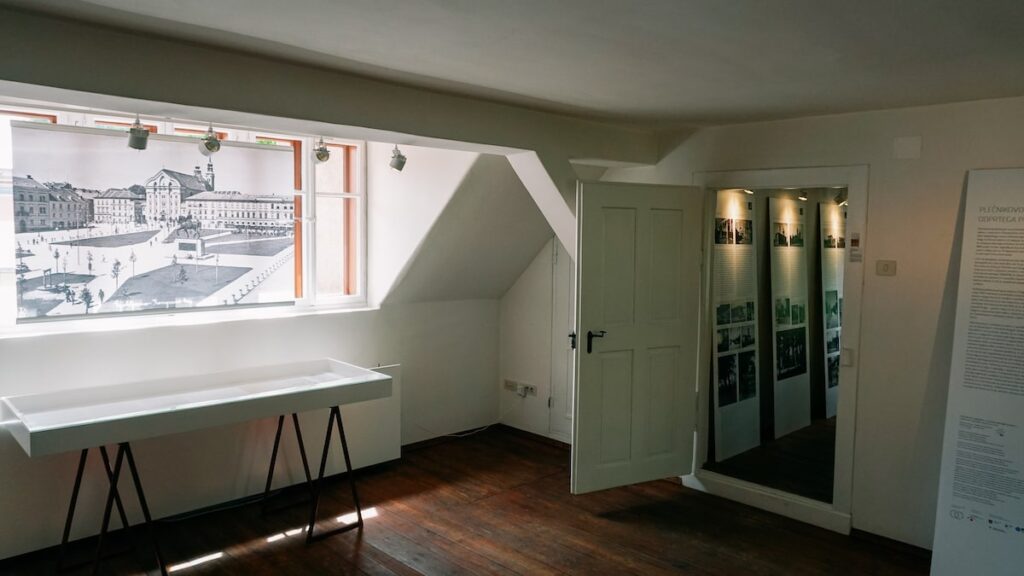
The tickets for the Jože Plečnik House cost 8 euros (reduced: 6 euros). If you buy a Ljubljana City Card, you get free access to the museum and more than 40 tours and attractions in Slovenia’s capital. I purchased one, and apart from the ease of access, it saved me lots of money and secured me a place on the house’s tour.
Guided tours
I have already mentioned it twice, but I will write once again: join a guided tour if you want to see the stunning Tower and learn more about the famous architect. The tours take place every full hour.
The Jože Plečnik House in Ljubljana: Conclusion

I have always been fascinated by the stories of people who sealed the fate of cities. Therefore, although there are more famous things to see in town when I decided to visit Ljubljana, I added as a top priority a visit to the Jože Plečnik House. The permanent exhibition is enlightening, but it’s the guided tour that really gives you a deeper understanding of the architect’s legacy.
Walking through the beautiful streets of Ljubljana, having lunch at the Main Market, and enjoying the Ljibljanica River banks are all great activities. However, knowing that these things (and so many others) are actually the vision of one person is mindblowing. It’s not an exaggeration to say that after visiting the museum, I no longer felt I was walking in a city. I thought that I walked in a person’s mind.
Therefore, for people with an interest in architecture and history, a visit to the Jože Plečnik House is a must. Rent a bike or just walk the short distance to Trnovo district and see up close where one of the most iconic European architects of all time lived and worked. It will be time well spent, and you won’t regret it at all.
More about Ljubljana: Ljubljana River Cruise Review
Pin it for later
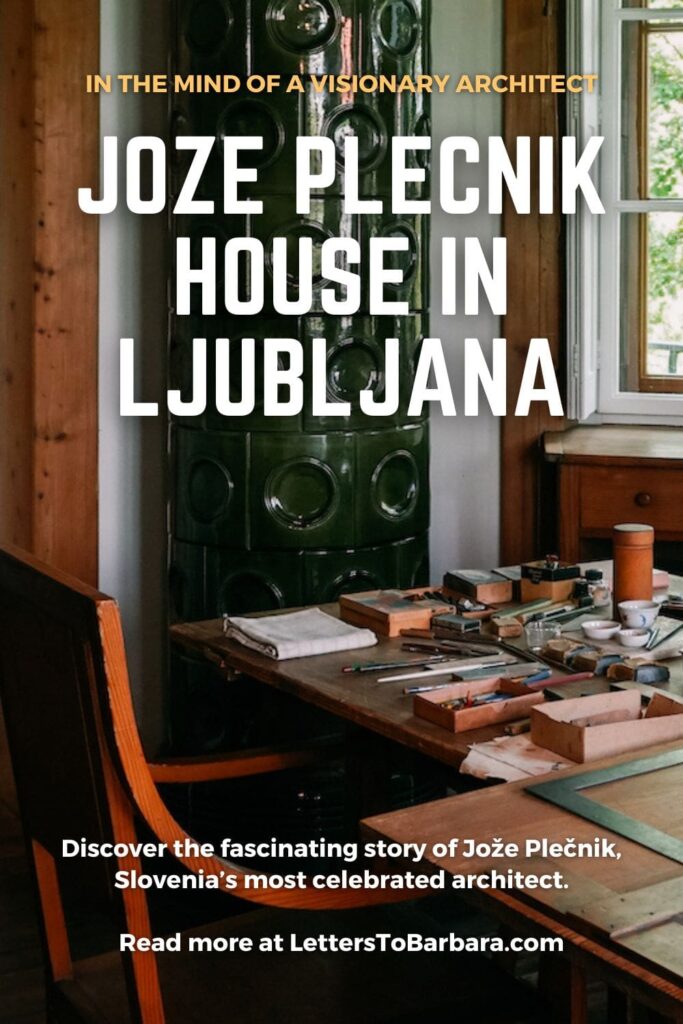
Sharing is caring. Share this article about the House of Jože Plečnik in Ljubljana with your friends.
Last Updated on June 29, 2024 by George Pavlopoulos
